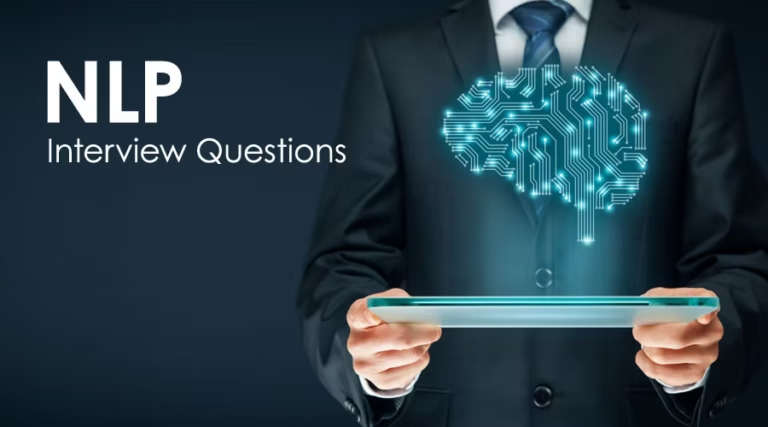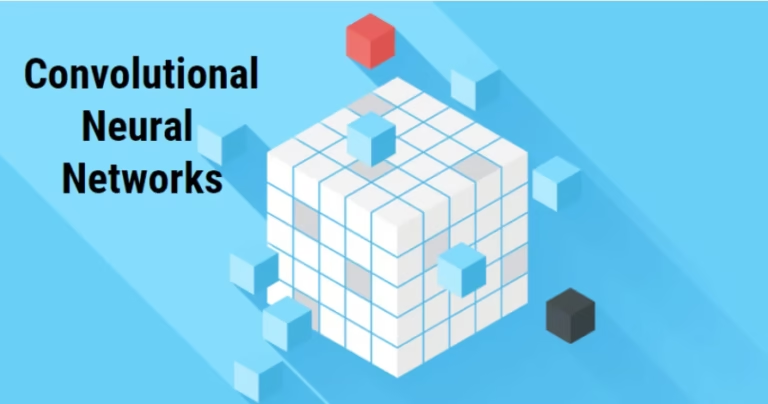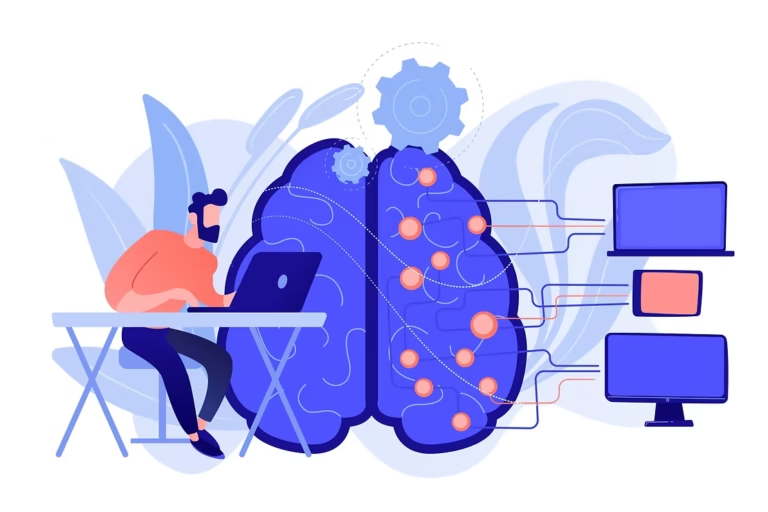1. Introduction to NLP in Interviews bhbghjbhjh
Natural Language Processing (NLP) is one of the most exciting and rapidly evolving fields in machine learning and artificial intelligence. Solid NLP interview prep is crucial for candidates aiming to showcase their understanding and skills in this domain. It deals with the interaction between computers and humans through natural language, enabling machines to understand, interpret, and generate human language in a valuable way. From search engines to voice assistants, NLP powers many applications we use daily. This makes it a key area of focus in machine learning (ML) interviews, especially at top companies like Google, Facebook, Amazon, and OpenAI.
For software engineers looking to land ML roles, particularly those focusing on NLP, the interview process is rigorous. Interviews will assess your understanding of NLP concepts and test your ability to apply them to real-world problems. Whether it's building a chatbot, improving a search algorithm, or creating a sentiment analysis tool, mastering NLP is essential.
In fact, the demand for NLP-related roles is skyrocketing. According to LinkedIn’s 2023 Jobs on the Rise report, roles in AI and machine learning, including NLP, are among the fastest-growing jobs in the U.S. As NLP applications continue to expand across industries, knowing how to tackle NLP-related interview questions has never been more important.
This blog aims to provide a thorough guide to preparing for NLP interviews. We'll cover core concepts, popular algorithms, coding challenges, and sample interview questions to help you succeed.
2. Core Concepts of NLP
2.1. Tokenization
Tokenization is the process of splitting a sequence of text into smaller, more manageable parts called tokens. Tokens can be words, sentences, or even subword units, depending on the specific task at hand. Tokenization plays a vital role in NLP, as most machine learning models require the input to be numeric, not raw text. This transformation from text to tokens is the first step in building any NLP model.
Types of Tokenization:
Word-level Tokenization: This breaks down a sentence or paragraph into individual words. For example, tokenizing the sentence "Natural Language Processing is amazing" at the word level results in ["Natural", "Language", "Processing", "is", "amazing"]. This is one of the most common tokenization techniques used in text classification and language modeling.
Sentence-level Tokenization: In this type, tokenization occurs at the sentence level, splitting paragraphs or entire documents into sentences. For instance, the text "NLP is fascinating. It helps computers understand human language." is split into ["NLP is fascinating.", "It helps computers understand human language."]. This approach is useful when performing tasks like summarization or dialogue systems.
Subword Tokenization: Modern NLP models like BERT and GPT often use subword tokenization. This approach divides words into smaller parts when necessary. For example, the word "processing" could be split into ["pro", "cess", "ing"]. Subword tokenization helps handle out-of-vocabulary words and enables the model to generalize across similar words. Hugging Face’s tokenizers library offers powerful tools for subword tokenization using byte-pair encoding (BPE) or WordPiece algorithms.
Why is Tokenization Important?
Tokenization reduces the complexity of raw text by breaking it into meaningful pieces, helping machine learning models work with text data more efficiently. Since NLP models operate on sequences of tokens rather than raw text, proper tokenization ensures that the structure and meaning of the text are preserved.
Example Code (Tokenizing text using NLTK in Python):
from nltk.tokenize import word_tokenize
text = "NLP is fascinating. Let's learn it."
tokens = word_tokenize(text)
print(tokens)
This code will output: ['NLP', 'is', 'fascinating', '.', 'Let', "'s", 'learn', 'it', '.']
2.2. Stemming and Lemmatization
Both stemming and lemmatization are techniques that help reduce words to their base forms, enabling models to process fewer variations of a word. However, the two techniques approach this in different ways.
Stemming: Stemming reduces words to their root form by chopping off suffixes. For instance, the words "running", "runner", and "ran" might all be stemmed to "run". The key disadvantage of stemming is that it can produce non-words or grammatically incorrect forms (e.g., "argu" as the stem of "arguing").
Lemmatization: Lemmatization, on the other hand, reduces words to their base or dictionary form, known as the "lemma." For instance, "better" would be reduced to "good" and "is" to "be". Lemmatization uses vocabulary and morphological analysis to ensure that the root word is a valid word, making it more accurate than stemming.
Use Cases:
Stemming is useful when speed is crucial, as it's a rule-based process.
Lemmatization is preferred for applications where understanding the meaning of words is important, such as sentiment analysis or question-answering systems.
Example Code (Using WordNet Lemmatizer in Python):
from nltk.stem import WordNetLemmatizer
lemmatizer = WordNetLemmatizer()
print(lemmatizer.lemmatize("running", pos="v")) # Output: run
2.3. Vectorization (Bag of Words, TF-IDF, Word Embeddings)
In order for machine learning models to understand text, we need to convert it into a numerical format, which is called vectorization. There are several techniques to achieve this:
Bag of Words (BoW): This approach converts text into vectors based on the frequency of words in the document. However, it disregards word order and context. For example, the sentences "I love NLP" and "NLP love I" would have the same vector representation. Despite this limitation, BoW works well for simple tasks like text classification.
TF-IDF (Term Frequency-Inverse Document Frequency): TF-IDF improves upon BoW by weighting words based on how important they are within a document and across the entire corpus. Words that are common across all documents, like "the" or "is", receive lower weights, while more informative words, like "NLP" or "transformer", are given higher weights.
Word Embeddings: Unlike BoW and TF-IDF, word embeddings capture semantic relationships between words. Techniques like Word2Vec, GloVe, and fastText represent words in a continuous vector space, where words with similar meanings are placed close to each other. For example, "king" and "queen" will have similar embeddings but will differ in specific dimensions related to gender.
In modern NLP, contextual embeddings such as those generated by BERT and GPT have taken embeddings a step further. These models understand the context in which a word appears, giving different vector representations for a word depending on its usage in a sentence.
Visual Representation: In a two-dimensional embedding space, words like “dog,” “cat,” and “pet” would cluster together, while words like “apple” and “orange” would form another cluster, reflecting their semantic similarity.
Example (Creating TF-IDF Vectors in Python using scikit-learn):
from sklearn.feature_extraction.text import TfidfVectorizer
corpus = ["I love NLP", "NLP is amazing", "I love machine learning"]
vectorizer = TfidfVectorizer()
X = vectorizer.fit_transform(corpus)
print(X.toarray())
2.4. Sequence Models: RNN, LSTM, GRU
In tasks where word order and sequence matter (such as language modeling or machine translation), sequence models like RNNs (Recurrent Neural Networks), LSTMs (Long Short-Term Memory networks), and GRUs (Gated Recurrent Units) are frequently used.
Recurrent Neural Networks (RNNs): RNNs process text sequentially, maintaining a "memory" of previous tokens in the form of hidden states. However, traditional RNNs struggle to capture long-range dependencies due to the vanishing gradient problem. For example, when trying to predict the last word in the sentence "The cat, which I saw yesterday, is...", RNNs may fail to remember the word "cat" due to the length of the sequence.
Long Short-Term Memory (LSTM): LSTMs solve the vanishing gradient problem by using special memory cells and gates (input, forget, and output gates) to decide which information to keep, forget, or pass along to the next step in the sequence. This makes LSTMs better suited for handling longer sequences.
Gated Recurrent Unit (GRU): GRUs are a simplified version of LSTMs that combine the forget and input gates into a single gate. While GRUs are easier to train, they may not capture long-term dependencies as effectively as LSTMs in some cases.
Example Application: In a language translation task, an LSTM-based model can take in a sentence in one language (e.g., English) and output the translated sentence in another language (e.g., French).
2.5. Transformers and BERT
The transformer architecture, introduced by Vaswani et al. in 2017, is a game-changer in NLP. Unlike RNNs, transformers do not process text sequentially. Instead, they use self-attention mechanisms to attend to different parts of the input sequence simultaneously. This allows transformers to model long-range dependencies more efficiently than RNNs.
BERT (Bidirectional Encoder Representations from Transformers) is one of the most famous transformer models. It reads text bidirectionally (i.e., from left to right and from right to left) to understand the full context of a word. This bidirectional approach makes BERT especially powerful for tasks like question answering, named entity recognition, and sentence classification.
Key Features of BERT:
Pre-training and Fine-tuning: BERT is pretrained on large text corpora using masked language modeling and then fine-tuned for specific downstream tasks.
Contextual Word Embeddings: Unlike static embeddings like Word2Vec, BERT generates contextualized embeddings, meaning the representation of a word depends on its surrounding words. For example, the word "bank" will have different embeddings in the sentences "He sat by the river bank" and "She works at a bank."
Transformers and models like BERT and GPT are critical for modern NLP and frequently come up in interviews, as they represent the current state-of-the-art.
3. Essential NLP Algorithms and Techniques
3.1. Named Entity Recognition (NER)
Named Entity Recognition (NER) is a fundamental task in NLP that involves detecting and classifying named entities in text into predefined categories such as people, organizations, locations, dates, and more. For example, in the sentence "Apple is planning to open a new store in San Francisco," NER would identify "Apple" as an organization and "San Francisco" as a location.
NER Methods:
Rule-based Methods: These rely on predefined rules like regular expressions to identify named entities. While simple to implement, they lack flexibility and scalability.
Machine Learning-based NER: Modern NER models are typically trained using supervised learning methods such as Conditional Random Fields (CRFs) or deep learning techniques like LSTMs and transformers. BERT-based models have shown state-of-the-art performance in NER tasks by leveraging contextual information in text.
Applications of NER:
Information extraction: Extracting key entities from unstructured text for applications like news articles, legal documents, or financial reports.
Question answering: Identifying relevant entities in the context of a user's query.
Example Code (NER using spaCy):
import spacy
nlp = spacy.load("en_core_web_sm")
doc = nlp("Google plans to open a new office in New York.")
for ent in doc.ents:
print(ent.text, ent.label_)
This code will output:
Google ORG
New York GPE
3.2. Sentiment Analysis
Sentiment analysis is the process of determining the emotional tone or polarity (positive, negative, or neutral) behind a piece of text. This is widely used for analyzing customer feedback, reviews, and social media posts.
There are several approaches to sentiment analysis:
Lexicon-based: This approach relies on predefined lists of words associated with positive or negative sentiment.
Machine Learning-based: More advanced techniques use supervised learning methods, where a classifier is trained on labeled data to predict sentiment. Models like Naive Bayes, SVM, and LSTMs are often used for this task.
Transformer-based: Recent models like BERT and GPT have been fine-tuned for sentiment analysis tasks and deliver state-of-the-art performance.
Business Use Cases:
E-commerce: Analyzing customer reviews to understand product sentiment.
Customer support: Detecting whether customer service interactions are positive or negative.
Example (Sentiment Analysis with TextBlob in Python):
from textblob import TextBlob
text = "The product is absolutely fantastic!"
blob = TextBlob(text)
print(blob.sentiment)
This code will output: Sentiment(polarity=0.5, subjectivity=0.6) indicating positive sentiment.
3.3. Language Models (GPT, BERT, etc.)
Language models are critical in NLP as they predict the probability of a word given its context. There are two major types of language models used in NLP:
Generative Models (GPT): Generative models like GPT (Generative Pretrained Transformer) are capable of generating human-like text. GPT models are trained to predict the next word in a sentence based on all previous words. GPT-3 and GPT-4 have become famous for their ability to generate coherent and contextually relevant text, making them valuable for tasks like chatbots, text summarization, and creative writing.
Bidirectional Models (BERT): In contrast, BERT is a bidirectional model that reads text from both directions to predict masked words in a sentence. This ability to consider context from both sides of a word gives BERT superior performance in tasks that require a deeper understanding of context, such as sentiment analysis, question answering, and text classification.
Key Differences Between GPT and BERT:
GPT: Focuses on generating text (great for tasks like text completion and summarization).
BERT: Focuses on understanding context (better for tasks like classification and question answering).
3.4. Text Classification and Clustering
Text classification and clustering are two key tasks in NLP, often used in document categorization, spam detection, and more.
Text Classification: This involves assigning predefined labels to a piece of text. For example, classifying an email as spam or non-spam is a common NLP classification task. Algorithms like Naive Bayes, Support Vector Machines (SVMs), and Logistic Regression are commonly used for this task, along with deep learning methods like CNNs and LSTMs.
Text Clustering: Unlike classification, clustering groups similar pieces of text without predefined labels. Clustering algorithms like K-Means or DBSCAN are used to identify inherent groupings in the data. For example, clustering customer reviews into different categories based on sentiment or topic.
Example Application: Text classification is often used in sentiment analysis to categorize reviews as positive or negative, while clustering can group similar reviews based on common themes like "product quality" or "customer service."
4. Typical NLP Interview Questions
4.1. Conceptual Questions
NLP interviews typically include conceptual questions that test your understanding of the fundamental building blocks of natural language processing. Below are some commonly asked questions:
"Explain tokenization and its importance in NLP."Tokenization is the process of splitting text into individual tokens (words or subwords) so that the text can be processed by NLP models. Tokenization ensures that models can understand the structure of language and convert raw text into a format suitable for machine learning.
"What are embeddings, and how do they improve NLP models?"Word embeddings map words to continuous vector spaces where semantically similar words are closer to each other. This helps NLP models generalize better and capture the semantic relationships between words. Techniques like Word2Vec, GloVe, and contextual embeddings like BERT's output vectors are critical for modern NLP tasks.
"How does BERT differ from GPT?"BERT is bidirectional, meaning it considers the context of words from both the left and right sides of the target word, making it highly effective for comprehension tasks. GPT, on the other hand, is a unidirectional generative model that excels in text generation.
4.2. Coding Challenges
In addition to conceptual questions, NLP interviews often involve hands-on coding challenges where you are asked to implement key algorithms or solve practical problems.
Example Coding Questions:
Tokenization Challenge:"Implement a function to tokenize a paragraph into sentences or words."This tests your knowledge of text preprocessing and tokenization techniques.def tokenize_text(text):
from nltk.tokenize import word_tokenize
return word_tokenize(text)
text = "NLP is fascinating. Let's learn it."
print(tokenize_text(text))
Bag-of-Words Model:"Write a program that implements a simple bag-of-words model and calculates the frequency of words in a given corpus."This task checks your ability to create a numerical representation of text data for classification tasks.
4.3. Problem-Solving Scenarios
Interviewers may also present real-world scenarios to assess your problem-solving skills. These questions require you to think about how to apply NLP techniques to real-world challenges:
Sentiment Analysis System:"How would you build a sentiment analysis system for a customer review platform?"In this case, you need to explain how you would preprocess text (tokenization, stemming, etc.), choose a model (e.g., logistic regression or LSTM), and evaluate performance using metrics like accuracy or F1-score.
Spelling Correction System:"How would you implement a system to automatically detect and correct spelling errors in user input?"This scenario tests your ability to integrate NLP algorithms with real-time applications. You could describe using a language model to predict the correct word based on context or apply edit distance algorithms (e.g., Levenshtein distance) for correction suggestions.
5. Best Practices for Preparing for NLP Interviews
5.1. Review the Fundamentals
Start by revisiting the basic concepts of NLP, such as tokenization, stemming, vectorization, and embeddings.
5.2. Practice with Real-world Data
Get hands-on experience by practicing with datasets like the Stanford Sentiment Treebank, IMDB reviews, or open-source datasets from Hugging Face’s model hub.
5.3. Master the Tools
Familiarize yourself with essential NLP libraries, such as:
NLTK: For basic NLP tasks.
spaCy: For more advanced applications, like NER.
Hugging Face Transformers: For working with transformer models like BERT and GPT.
5.4. Mock Interviews
Mock interviews help simulate the pressure of real interviews. Platforms like InterviewNode, Leetcode, and HackerRank provide NLP-specific challenges.
6. Resources for NLP Interview Prep
6.1. Books
"Speech and Language Processing" by Daniel Jurafsky and James H. Martin.
"Deep Learning with Python" by François Chollet.
6.2. Online Courses
Coursera: "Natural Language Processing" by DeepLearning.AI.
Udemy: "NLP with Python for Machine Learning."
6.3. Research Papers
"Attention is All You Need" by Vaswani et al. (2017).
"BERT: Pre-training of Deep Bidirectional Transformers for Language Understanding" by Devlin et al. (2019).
6.4. Blogs and Websites
Towards Data Science: Provides in-depth articles on NLP topics.
Hugging Face: Offers tutorials and pretrained models for NLP.
7. Conclusion
NLP is a complex but rewarding field, and acing an NLP interview requires thorough preparation. By understanding the core concepts, practicing coding challenges, and staying updated with the latest trends in NLP, you can significantly improve your chances of success. Remember to review your fundamentals, work on real-world projects, and leverage resources like InterviewNode to sharpen your skills.






